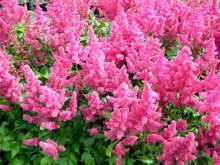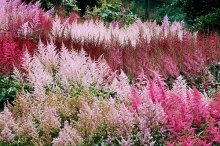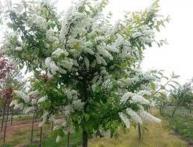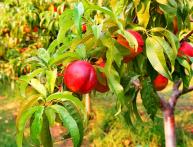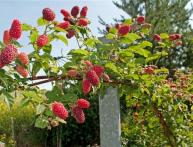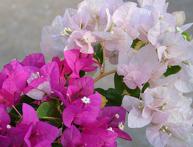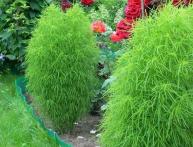Everything you wanted to know about Japanese astilbe. How to plant, grow and care
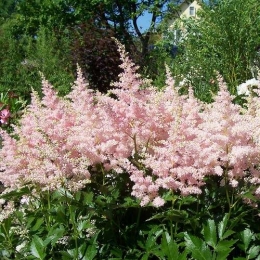
Japanese astilbe is famous among flower growers for its long and very beautiful flowering processes. The main enemies of any flowers are shade and dampness; this plant does not care. Its reddish branches and spreading foliage look amazing in every garden and not only during the flowering period.
Content:
- What is this plant
- Planting methods and features of growing astybalda
- Plant propagation methods and care details
What is this plant
Astilbe is a herbaceous plant belonging to the saxifrage family. It is most widespread in Japan, on the east coast of Asia and North America. Today, more than 40 varieties of this plant are known in the wild, and about 400 varieties have been bred by gardeners. The largest recorded height of a flower is 2 m. The color shades of flowers are extremely varied.
Astilbes with white, red, purple and pink petals look especially attractive. The foliage is dark green and in some cases burgundy. The fruit looks like a fragile capsule filled with seeds. Become a witness flowering only possible during the summer months.
Planting methods and features of growing astybalda
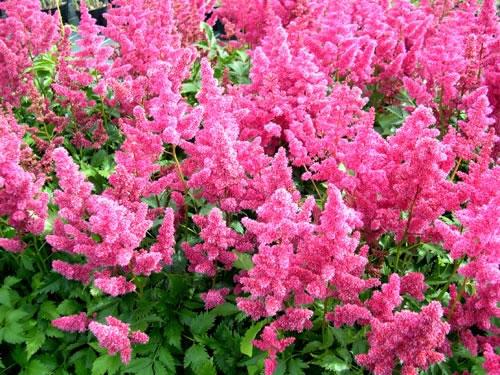
In order for astilbe to take root in our unusual climate zone, it is necessary to choose the right time and place for planting it. The speed of its growth, like that of any plant, mainly depends on the abundance of solar heat and moisture.
Large representatives of this species should be planted no closer than 50 cm to each other. Medium and small ones at a distance of at least 30 cm. The soil must be put in order before planting. Dig up and remove all weeds and their root systems from the planting area.
Compost, peat or manure will help make the environment more nutritious for growing astilbe. It is better to use all three ingredients in equal proportions at the rate of 2 buckets per square meter. m. Astilbe is planted in early spring.
Despite the fastidiousness of the exotic guest in our gardens and cottages, planting a plant is a fairly easy process and understandable to any amateur gardener.
Features of cultivation
The usual environment for this plant is sparse shade. Plenty of sunshine for rapid flower growth It’s not at all necessary, but you can’t do without it. Most subspecies bloom much longer and more abundantly if they are not placed in an open field. However, it is worth considering that some varieties prefer more sun. For example, Gloria or Bergkristal.
When planted in open areas, their flowering is also shorter, but at the same time it is much more intense. To create the most comfortable conditions for the flower for wintering, preserving moisture and maintaining a favorable temperature, you should cover the soil around the plant with sawdust, straw or bark. You can also use small gravel for this.
The duration and lushness of your Japanese astilbe directly depends on the correct location for the plant, relative to its variety, and attention to the required details.
The main thing is the soil. What should it be like?
Particular attention should still be focused on the soil. This plant will not tolerate prolonged drought. Any soil is good for astilbe, as long as you don’t forget to water it on dry days. You can protect it from wilting if you plant it on the soil in places where groundwater lies.
But if you have the goal of achieving the longest and most beautiful flowering, then you should focus on a more favorable choice of site for planting. We have already found out that for some varieties, shaded areas are more suitable than full sun.
It is also important amount of minerals in the earth, such as phosphorus and potassium. This value can be increased by using special fertilizers with a high content of these chemical elements. Bone meal is also suitable for this. When planting, dig holes up to 30 cm and first mix flour and humus fertilizers in them. Fill it with water and only after that plant the flower itself.
It is possible to achieve the longest possible flowering period by fertilizing the soil during planting. Well, who doubted it?
Plant propagation methods and care details
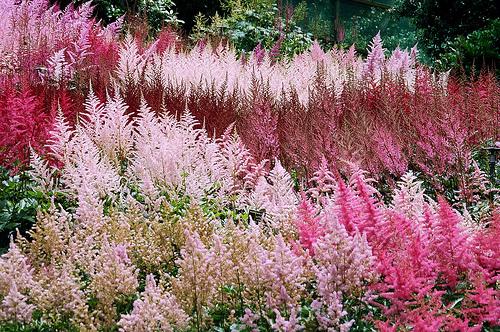
There are three known methods of propagating Japanese astilbe:
- Dividing the bush
- Budding
- Seeds
The first option is the most common and simple:
- We dig up the plant.
- Cut off all the leaves.
- We divide it into slices with at least 3 buds.
- The root is cut off.
- Delenki are planted at a distance of 30 cm from each other.
- We water every day.
- It is better to carry out the division procedure at the beginning of spring, since flowering will begin closer to autumn.
Budding is faster but more complicated than division. Also in the spring, when budding begins, the shoots are cut off along with a piece of rhizome. The cut area should be sprinkled with ash. The shoots should be planted in a mixture of gravel and peat in a ratio of 1:3. The new bush is covered with plastic film. They can be replanted as a full-fledged plant this coming fall or next spring.
Propagation by seeds. The main thing here is that the seeds are of high quality. Most varieties, when they produce seeds, do not retain their characteristics. It is worth sowing only on moist soil. There is no need to bury them in the ground.
Seeds must be prepared for planting using a special method. For the first 20 days they should be stored in a cool place (-4/+4 degrees). Then in a lighted and warm room (approximately +20 degrees). Only after this, in the spring, can you try to plant them.
Japanese astilbe is a plant that will obviously give you a lot of pleasant troubles if you decide to propagate it.
How to care for astilbe? She loves to “swim.” Water this plant as often as possible. Even from a short drought, astilbe begins to fade. The leaves curl, the colors fade, and the bush itself becomes very sad in appearance.
Not worth it beware of our frosts. She had already gotten used to them. But, unfortunately, temperature fluctuations in the spring are not to her taste. And there’s nothing you can do about it. The well-being of a flower can be improved if it is provided with a stable temperature regime by covering the bush with something like spruce branches. Cover the soil near the stem with pine needles.
As you can see, the process of propagating the plant will not bring you any trouble, and caring for astilbe is extremely simple and even novice gardeners can do it.
Admire the beauty of blooming astilbe in the video:
Interesting information about the vegetable garden

